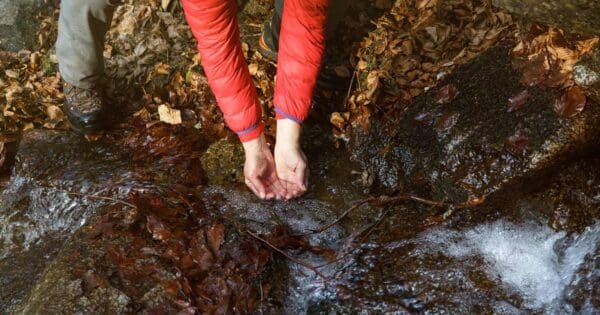Be careful eating bush tucker
The Aussie bush contains a bounty of wild edible plants that runs into the thousands, ranging from starchy seeds and tangy fruits to mushrooms, tubers, leaves and seaweed. However, knowing how to identify edible plants is not easy. The knowledge Aboriginal people have about which plants are edible, which plants are poisonous, and which plants are poisonous but can be prepared in certain ways that make then safe to eat would have been acquired over generations of trial and error.
While most plants are edible, although not necessarily nutritious, and only a small portion poisonous, you still need to be very careful when choosing to eat wild foods in the bush.
General safety tips
- If in doubt, leave it out. Never eat a plant unless you’re absolutely certain of its identity.
- Identification is hard. Many plants look similar, and accurate identification takes expertise.
- Some plants require preparation. Certain toxic plants can be made safe through specific preparation methods, but only with the right knowledge.
- Avoid internal bush medicines. Making bush medicines that are swallowed is not recommended. Topical applications (rubs or poultices) or those that are inhaled are generally safer.
- Respect environmental laws. Plants in National Parks are protected — picking flowers or fruits is illegal. Also, get permission before gathering on Aboriginal land.
- Avoid contamination. Never consume plants growing in areas that may be sprayed with chemicals or contaminated by urban or industrial runoff.
A simple method of testing food before consumption is the “taste test” method. Taste Testing Food requires you to simply trial the proposed food on your body before consuming it for energy.
The taste test method (Use with Caution)
If you’re in a true survival situation and unsure about a plant’s safety, the “taste test” may be used. This method is time-consuming and not foolproof — use only as a last resort.
Steps to taste testing wild food
- Break open the plant or fruit and rub a small component of its insides on a sensitive area of your body, for example the inside of your forearm where the skin is sensitive. Wait 15 minutes.
- If there is no reaction after step one, break open the plant or fruit and blotch it on your lips, without chewing or consuming. Wait 15 minutes.
- If there is no reaction after step two, chew a piece of the plant or fruit and spit it out, do not swallow. Wait 15 minutes.
- If there is no reaction after step three, chew a piece of the plant, swallow it and wait 15 minutes.
If there’s no reaction after each step, the plant may be safe to eat — but caution is still critical. Some toxins act slowly, and the taste test doesn’t detect all risks. If in doubt, stop and re-evaluate.
Special Warning About Fungi
Extreme care must be taken with wild mushrooms. Some toxic varieties have delayed symptoms — sometimes up to 14 hours — and can cause liver failure or death. Safe identification requires expert knowledge.
Example: A man conducted a taste test over two days with wild mushrooms and experienced no immediate reaction. Confident they were safe, he consumed them. Within days, he developed liver failure. The mushrooms were only safe when cooked — a detail he didn’t know.
Lesson: Even if you test wild food with care, not knowing how to properly prepare it can still be deadly.
Final Thoughts
The art of survival is about reducing risk, not increasing it. When it comes to bush tucker, if you are not 100% certain a plant is safe to eat — including knowing how it needs to be prepared — don’t eat it.
Some content in this article was adapted from www.survival.org.au






I went to a workshop on finding edible mushrooms. The guy was saying that the approach of the Australian Army is for soldiers to never use wild mushrooms – due to the difficulties of correct identification and so risk involved for comparatively few calories.
That’s very good advice Rob. Thanks for sharing.